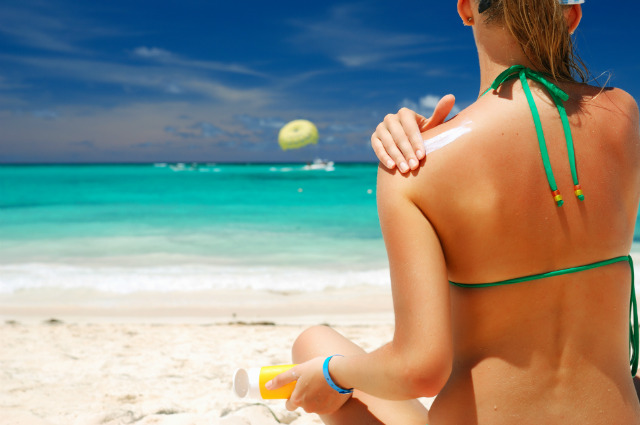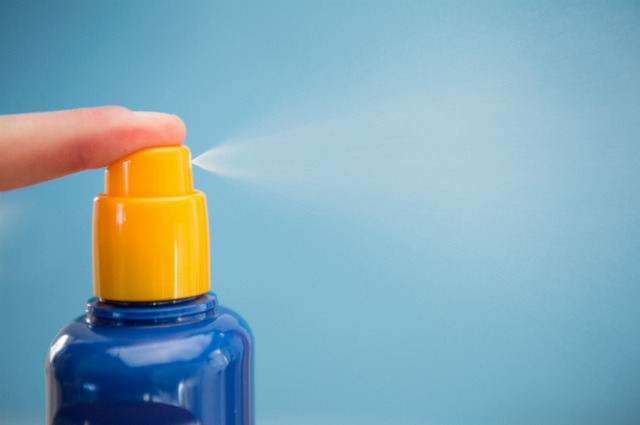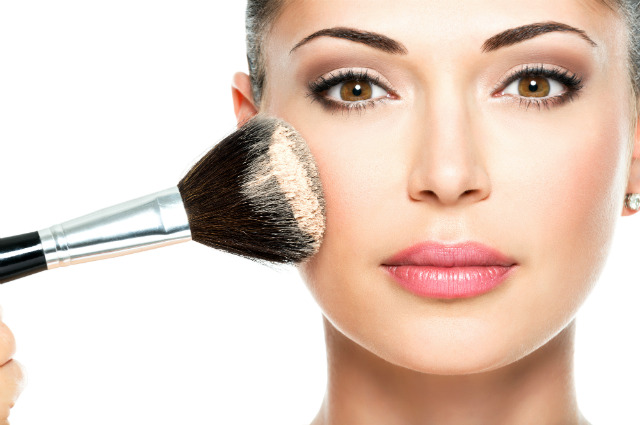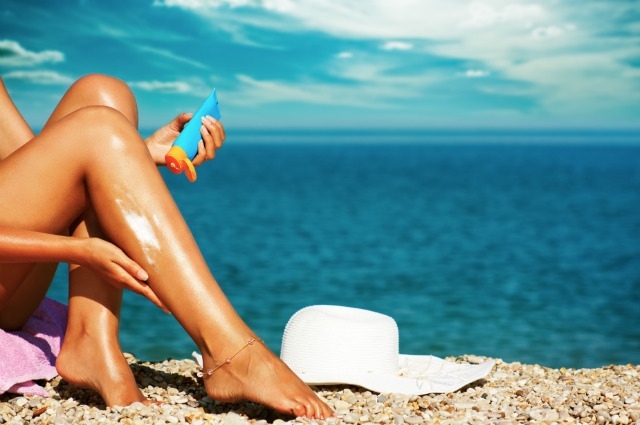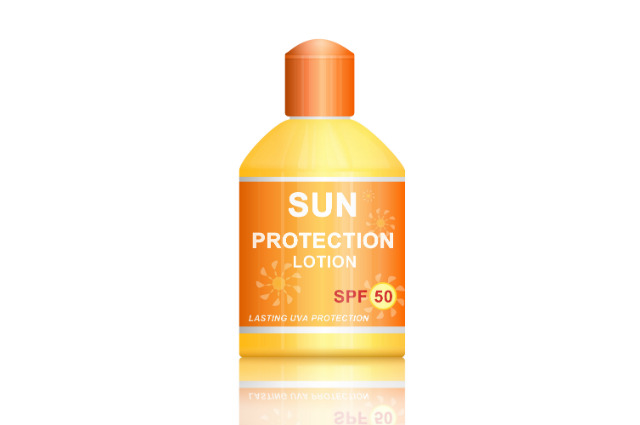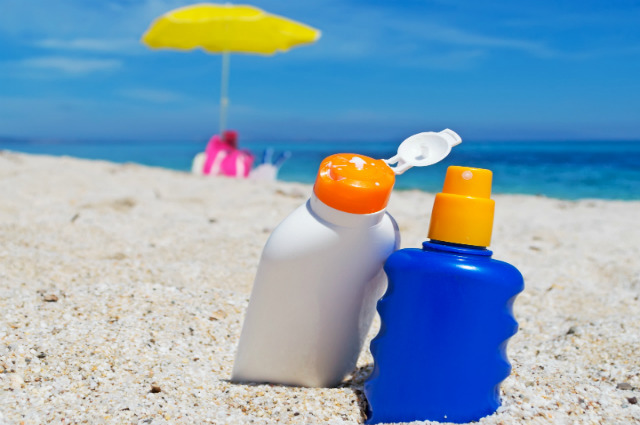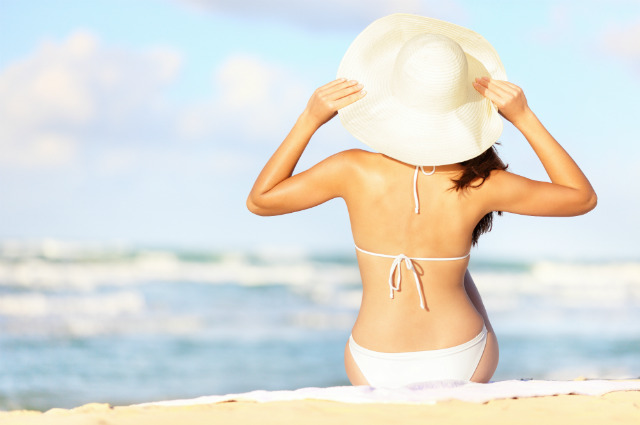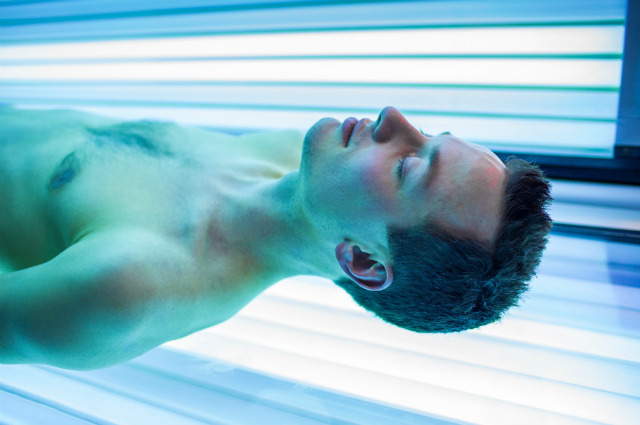Myths About Sunscreen (And How To Protect Your Skin Properly)
Myth: I’m safe indoors.
If you're near a window for a prolonged period of time, your skin is still susceptible to damage from the sun. "Typical windows only block out certain types of ultraviolet rays from the sun," says Huang. She referred to the example of a truck driver who accumulated many more wrinkles on the left side (driver's side) of his face after 28 years on the job. "These wrinkles were a result of the chronic ultraviolet exposure from the sun," she says.
Myth: Spray sunscreens offer adequate protection.
Bailey recommends avoiding sunscreen products that come in spray-on bottles. "Spray products do not apply enough product on the skin and the protecting ingredients are dispersed in droplets that are spotted on the skin and don't entirely cover every cell," she says. She also notes that the ingredients in many spray sunscreens are not good for our lungs.
Myth: My makeup says it has sunscreen in it so I don’t need anything extra.
As mentioned earlier, Huang recommends using a sunscreen with a SPF of 30 or more daily. However she says the mistake here is that people place a false sense of security in their makeup products. "Many face lotions and cosmetics have a sun protection factor of less than 30," she says. Bailey says that the "sweet spot" is SPF 30 because it will protect against 97% of UVB rays. (SPF 15 products only protect against 93% and SPF 10 products 90%.) "For people who wear makeup I tell them to up the odds of being protected by adding other important steps to block rays," says Bailey. "Those include mineral makeup and a broad brimmed hat. If you are out in intense sun though, expect to need to reapply."
Myth: I only need sunscreen on sunny days.
UV rays can penetrate clouds, so just because you can't see or feel the sun doesn't mean its rays aren't reaching your skin. Bailey says that too many people commonly believe their skin is safe on a cloudy day. She also points out that it's important to use protection in the morning, the late afternoon and even when you're in the shade. In other words, there's no time of day or type of weather when your skin is safe from the sun.
Myth: If my sunscreen is waterproof, I won’t need to reapply.
Every skincare expert that we talked to said it's important to understand that there's no such thing as waterproof sunscreen. "There is 'water-resistant' sunscreen, but this will also come off your skin after heavy sweating, or a dip in the ocean or pool," says Huang. In fact, Bailey points out that the FDA recently prohibited use of the term "waterproof" because it causes people to falsely believe sunscreen can't come off. "If you buy a water-resistant sunscreen, it will say that it's effective for either 40 minutes or 80 minutes. That will tell you how long your skin can be wet or sweaty before you need to reapply," says Benabio.
Myth: I only need a little bit of sunscreen.
Huang, Benabio and Bailey all agree; another one of the most common mistakes that people make with sunscreen is not using enough of it. "Most adults need about 1 ounce (the size of a shot glass) to fully cover their bodies," says Benabio. "Many sunscreens come in bottles of 3 to 6 ounces, so, that's 3 to 6 applications. If you're using the same bottle of sunscreen in July that you opened in May, you're not using enough." All three doctors also noted that it's important not to neglect often missed body parts like the ears, neck, lips, hands and feet.
Myth: Products with SPFs above 30 provide better protection.
Earlier we mentioned that products with an SPF of 30 will protect against 97% of UVB rays. "After that the percent of UVB rays blocked doesn't go up very much as the SPF numbers go up," Bailey explains. (e.g. SPF 50 will block 98% of UVB rays and SPF 70 98.5%.) "If you follow the recommended 1 ounce of sunscreen application for the average sized adult body surface in a swim suit, then at SPF 30 you are equally protected by either product," says Bailey. "What's more important is to choose a sunscreen that is labeled 'broad-spectrum,' meaning that it protects against both UVB and UVA rays," Benabio adds.
Myth: I can use any type of sunscreen.
"It's very important to match the right sunscreen to your skin type so that you love your product and wear it every day," says Bailey. "I always recommend mineral zinc oxide based products because of the way zinc works and because it is one of only two FDA approved broad spectrum ingredients to block UV-A1 rays, which are the most intense and are out all day, all year and penetrate the skin most deeply." Bailey's website provides an excellent in-depth guide that can help you choose the right sunscreen for your skin type and individual needs. You can also refer to her "quick pick" guide based on the most common skin types and questions that she receives.
Myth: Sunscreen is all I need.
Sunscreen can't block every single type of light ray emitted by the sun. "Even zinc oxide lets the very end of the UV-A1 rays through," says Bailey. "It's why you need to wear a full brimmed hat and sun protective clothing when possible for the best protection."
Myth: Tanning beds are safe if I use sunscreen.
"Tanning beds are never safe, with or without sunscreen," says Benabio. "Tanned skin is damaged skin. Simply put, there is no such thing as a 'safe tan.'" Bailey adds, "Tanning beds emit mostly UV-A1 which causes skin cancer and is the most aging UV ray for the skin. Sunscreens don't block this ray well, and if they did you wouldn't get a tan from a tanning bed." She explains that it's impossible to have a tan without accruing damage to your DNA (the type of damage that causes cancer) and without causing future wrinkles.
Myth: Chemicals in sunscreen are more dangerous than using sunscreen for skin protection.
Bailey made note of two ingredients that buyers should beware when purchasing sunscreen: avobenzone and oxybenzone. "Avobenzone products are not stable. They break down once formulated and they break down when they neutralize UV rays on your skin," she says. "Oxybenzone products are absorbed through your skin and the chemical has been demonstrated to be a hormone disruptor." Benabio added that there is also some controversy concerning alpha hydroxy acids (AHA's) in sunscreens. "Consumers who want to be extra cautious might avoid those sunscreens," he says. However, aside from avoiding these, all of our experts emphasized the fact that not using sunscreen is far more dangerous than exposure to its ingredients.
